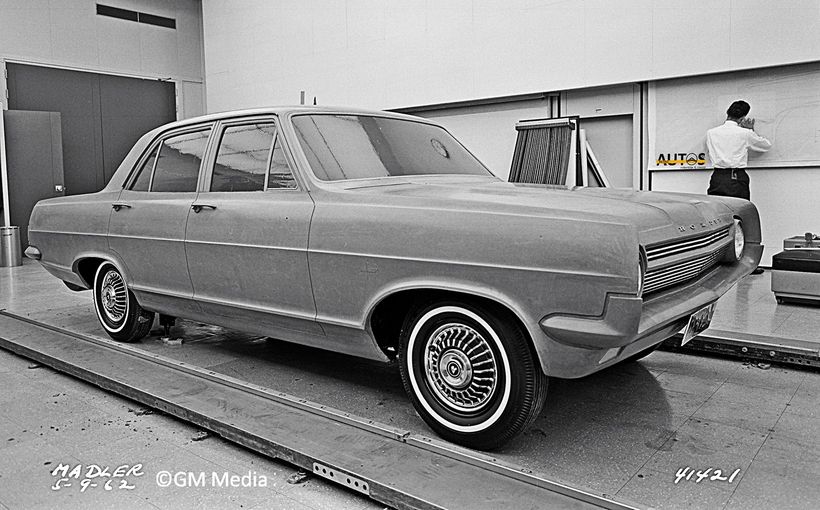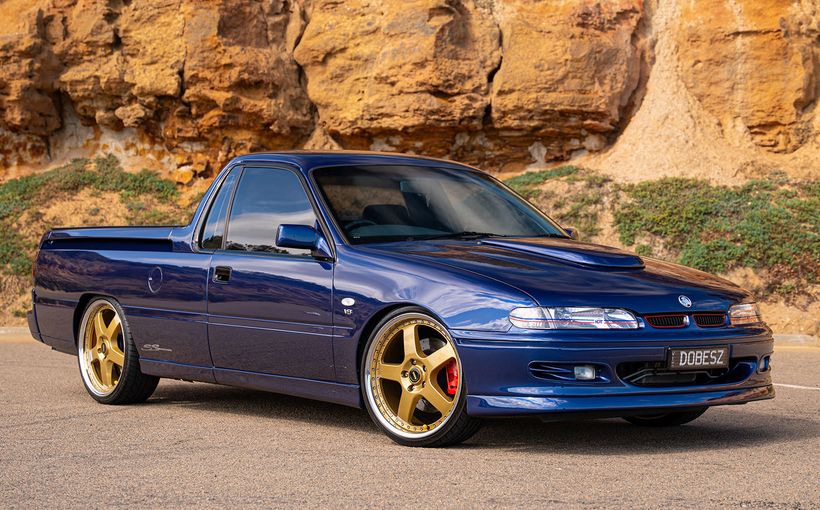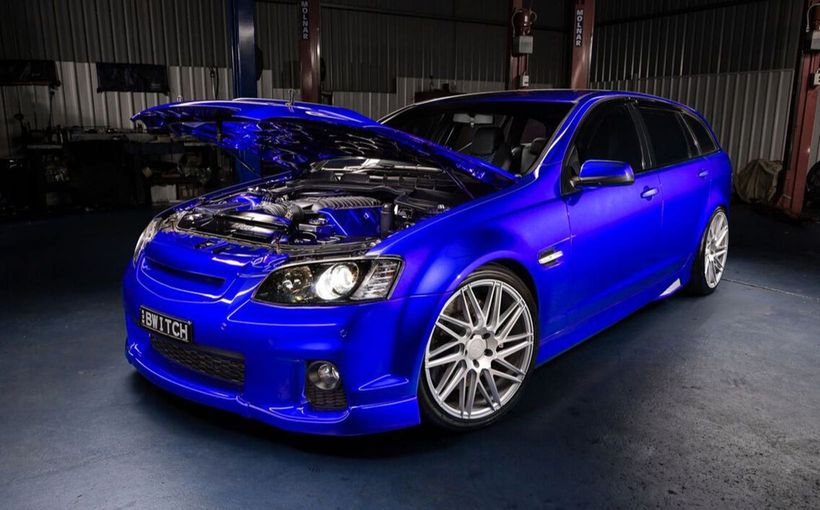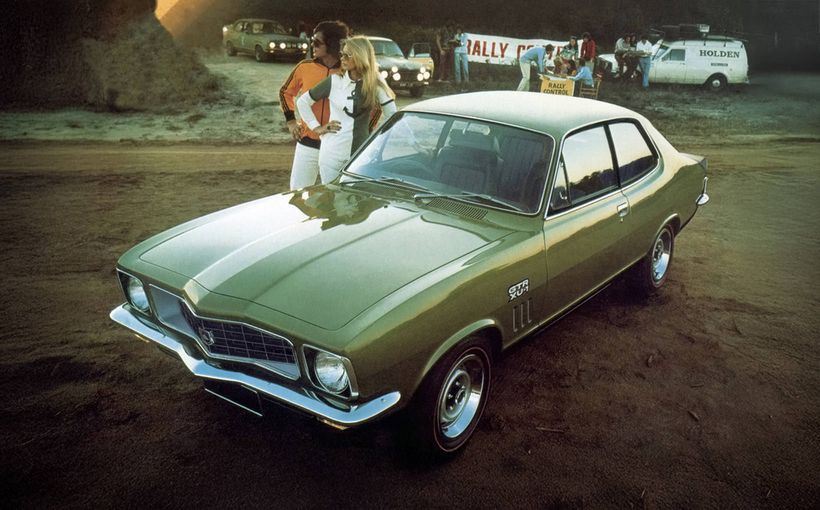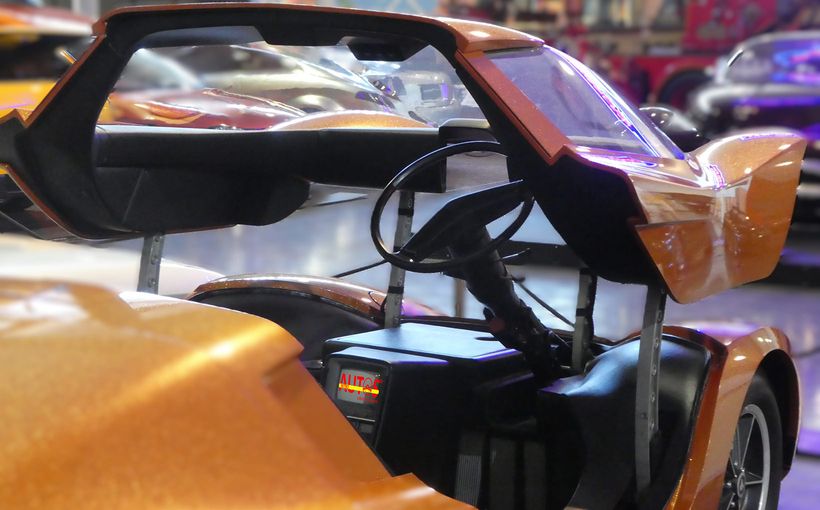Holden TX-TC-TD Gemini: GM’s first world car works best as the Holden Gemini

The Holden Gemini could hardly have been more representative of its time. Launched in mid-1975, here was the small car Holden needed to regain some lost sales momentum. Almost anyone even passingly conscious of popular culture was familiar with the jingle ‘You and I and Gemini’, which kind of melted into the Australian psyche.
When compared with the HJ Holden and LH Torana, it felt more modern and much more efficient. This may seem unkind but being designed and engineered by Isuzu rather than GMH, at a time when the George Roberts philosophy of plough understeer still ruled, was a big point in the Gemini’s favour.
The Gemini was one of four early versions of General Motors’ new ‘world car’, known as the ‘T-Car’. These comprised the Chevrolet Chevette (Brazil, March 1973), Opel Kadett (Germany, September 1973), Isuzu Bellett Gemini (Japan, November 1974) and Holden Gemini (Australia, February 1975). The T-Car was manufactured in numerous countries under many different names. Interestingly, a Chevrolet Chevette was sold in the UK rather than a Vauxhall-branded car.
Years later came the ‘V-Car’ (Commodore) and the ‘J-Car’ (Camira). Our Holden differed in only minor respects from the Isuzu Bellett Gemini and it’s the middle word here that indicates best the Gemini’s place in Japanese automotive history: it was the replacement car for the admirable Bellett, one of the first Oriental imports to achieve sales success in Australia while reshaping our idea about the potential of small sedans.
Wheels magazine noted in its April 1975 edition news story on the newcomer:
The Australian and Japanese versions of the GM world car are probably the best from a mechanical point of view because the German Opel is available only with a very economical but rather weak-kneed 1.2-litre four that has been around since the early sixties. The Brazilian Chevette has a more modern Opel-designed engine, but it’s only a 1.4.

The SL coupe’s attractive styling promised a little more sporty character than the car delivered.
The Gemini set a new template for inexpensive small cars in the Australia of 1975. It was one that Holden product planners would have done very well to have remembered when they were developing the original 1982 Camira, of which more later. Interestingly, its physical size was somewhere between the Corolla and the Corona, with performance similar to the latter and economy close to the former. And in 1975 the fact that it was rear-wheel drive hardly provoked a comment because most small cars still were; BMC’s Mini, 1100 and 1800 being honourable exceptions, while the Fiat 128 and Renault 12 were regarded as somewhat radical.
How fascinating that General Motors’ first world car was the model that replaced the Isuzu Bellett! The Japanese industry had taken so much notice of how export customers (read: Australia, the US) responded to its cars, and the Bellett had been a star. It did seem though that the General had taken rather a long time coming to this concept of one basic car that could be prepared in various ways to suit local tastes.

More prosaic is this entry level TX Gemini sedan, the least expensive Holden on offer in 1975.
To give the Holden Gemini a bit more historical context, let me briefly recap how what might be called national motoring character had defined cars in the postwar era until into the 1960s. We all know what postwar American cars were like – growing in size and power with each model change, extravagantly styled, very big outside but not so big inside, favouring a plush ride over adroit handling: cruisemobiles.
Then there were the German cars. The Volkswagen Beetle brought motoring to a more affordable level but in the mid-1950s the big move was to bubble cars, which gave many families three wheels instead of two for the first. Further upmarket was Mercedes-Benz, designed for high speed cruising on the autobahn, built to a very high level of quality.
Only the French could have created the gorgeous Citroën Diesse but even the baby 2CV and the later Renault R4 had long travel suspension a soft ride and generous body roll.
Italian cars were suited to alpine passes – high-revving, taut-handling, spirited, charming. The Swedes had to cope with icy conditions. And on it goes.
By the early 1960s more engine power and better roads in many countries enabled a kind of convergence. The Ford Consul Cortina perhaps merits the title of the world’s first postwar world car. Of course, the Ford Model T of 1908 was the first ever car designed to be sold in a range of markets with only minor (or no) changes; Australia was one of many countries to enter the mass-motorised era courtesy of Henry Ford.
Moving on more than half a century, the Ford Cortina was deliberately named for an Italian resort town. The Cortina was less resolutely drab British than any of its predecessors and had real pretensions to style. While it was hardly an Alfa Romeo, it had good dynamics and logical controls. It would clearly appeal in many markets, of which Australia was one.
The 1966 Fiat 124 sedan was a second example. Where its 1100 predecessor had for many years been afflicted with suicide front doors, along with a column gearshift, the 124 while perhaps less characterful, was also less demanding and you didn’t have to rev the hell out of it to get anywhere, lowdown torque not having previously been an attribute of small Fiats.

The lusty Isuzu 1.6-litre SOHC engine gave the Gemini an excellent power to weight ratio. The basic sedan weighed just 900kg.
So it took General Motors a long time to come around to this way of thinking. This was largely because of its silo methods of operations. Chevrolet went its way, Vauxhall its, and Opel was different again. The Corporation amounted to a collection of fiefdoms, each of which went pretty much its own way most of the time. The 48-215 Holden would have served at least as well as the equivalent E Series Vauxhall in Britain or the Opel Kapitän in continental Europe but, despite the existence of General Motors Overseas Operations, that was not yet the way the corporation approached matching cars to markets. Additionally, the autonomy of subsidiaries was respected. (Ford, by contrast, had perhaps learnt from its experience with the Model T, although the extent to which car companies ‘learn’ anything is questionable and there is an entire book in this subject!)
One inherent risk in the world car strategy is that the product will be bland. Yes, the Fiat 124 did not have as much sheer charm as, say, a Fiat 1100 Riviera, but it still managed to be distinctively – unmistakably – a car produced by Fabbrica Italiana Automobili Torino. But the Gemini did not declare its Holden or even its Isuzu identity. Good as it was, I still feel the need to describe it as bland.
Perhaps the car the Gemini felt most like was the Chrysler Lancer. Both cars used a revvy chain-driven SOHC engine with an alloy head and hemispherical combustion chambers; both were noisy but willing performers. The other Mitsubishi-sourced ‘Chrysler’ of the time was the larger Galant. Both used the Saturn engine but the Galant had the 1.6-litre version and the Lancer the 1.4. Once again, the Gemini fitted between two concepts. Although similar in dimensions to the Lancer, its engine matched the capacity of the Galant.

Even before the coming of RTS, the Gemini was a crisp handler.
Pricing was keen. The TX Gemini was offered as a basic sedan and as the better equipped SL in sedan and nifty coupe form. The 1584cc engine developing 63kW and running through a four-speed manual gearbox was common to all. At $3114 the entry level Gemini (and that’s its whole name) undercut the base Lancer sedan ($3245). The cheapest Corolla of the time cost $2814 and the Corona opened its books at $3492. The SL sedan cost $3359 and the coupe $3416, which did represent a lot of style for the dollars. What a pity that a more powerful engine wasn’t offered.
The Holden marketing suits insisted that ‘SL’ stood for ‘Super Luxury’ in which case that must have been what a clock, carpets, radio, cigarette lighter and better trim meant (hadn’t they seen a Jaguar?). On the SL coupe alone you could order option A8T which gave you plaid trim and spoke-type hubcaps. Wow!

Sandpiper was a TC range highlight, endowing the Gemini with extra cool.
I thought about buying an SL coupe but was underwhelmed by the driving experience. I tried to explain to a bewildered salesman that the Gemini lacked the solid feel of a (much more expensive!) Fiat 125 sedan. Yes, but guess which one would have proved more reliable over the years!
The comparison can be sustained a little longer. With its standing 400m time of 18.6 seconds, the Gemini almost matched the DOHC Fiat on acceleration, trailing by just 0.4 of a second. Its top speed was 152km/h which was a sight faster than you could achieve in a 3.3-litre Holden Kingswood. Needless to say, the Gemini was the best performing car of its size and price on the market.
It was unfortunate though that it arrived only a year or so before ADR 27A came into force, taking performance expectations down to a lower level. In fact it’s only possible to understand the relationship between the Gemini and the supposed ‘supercar’ Camira in this context. The Camira arrived seven years later than the Gemini but in most respects had lower real world performance. This was partly a reflection of how expectations had dropped and partly a reflection of Holden’s ill-advised decision to use a 1.6- rather than a 1.8-litre engine with the hope of educating buyers not to expect generous low-down torque. Isn’t it difficult now to believe that performance levels in 1982 were often below those of 1975? Interestingly, the April 1984 edition of Wheels featured a red Mitsubishi Cordia Turbo on the cover under the heading ‘Performance Lives! Cordia Turbo. 200km/h.15.9 sec 400m. $13,500. And here now.’ The sub-text to this is: there were virtually no high performance cars between 1976 and 1984!
In 1975 before Chuck Chapman, Joe Whitesell and Peter Hanenberger rewrote the Holden handling book, the Gemini handled pretty well, although it was a great idea to fit the factory-optional radial tyres. The little Holden pointed well and had the best ride in its class. Once Radial Tuned Suspension (RTS) was plumbed in underneath, the Gemini was an absolute bundle of fun to drive but that was still a little way down the calendar.

The TX model was superseded by the TC in 1977. This was a minor facelift but, importantly, a front stabiliser bar and steel-belted radials were made standard. The popular Sandpiper variant with checked cloth upholstery, fake woodgrain, stereo cassette, four-spoke steering wheel and fake and alloy-look wheel covers joined the range.
The following year brought a second facelift with a new frontal appearance. The bolder grille and rectangular headlights freshened the appearance of what was still an appealing little car, especially in coupe guise. But bigger news for the TD range was the incorporation of RTS. Like almost every other Holden, the Gemini was now the best handling car in its class. A five-speed manual gearbox was offered as an option, suggesting the Gemini had really come of age.

There were new variants, too. A two-door wagon and panel van extended the Gemini’s market penetration. These vehicles combined the front sheet metal and dash of the Japanese models with doors, roof and rear panels from Opel, making this perhaps the most international Holden yet seen. New SL/E variants of the sedan and coupe were introduced. The SL/E continued the Sandpiper theme under another name while adding alloy wheels of the style used on the Sunbird SL/E. With its plush velour trim and more upmarket ambience, it was clear that the Gemini SL/E was pitched directly at the Ford Escort Ghia, which was selling strongly. We can mark this as the real beginning of the trend to plush small cars in Australia, a trend which was acknowledged a few years later in a Wheels comparison of topline small cars under the heading ‘Life’s Little Luxuries’.

Maybe the SL/E was a bit too much and a bit too much money too early because in early 1979 it was replaced by the more competitively priced SL/X which lost the alloys in favour of the Sandpiper spoked design wheel covers.

The neater grille and rectangular headlights gave the TD a bold new face.
Van buyers could specify the Gypsy package with extra gauges and look-at-me decals. This was the beginning of the new vogue for panel vans, which heralded Van Wheels magazine which morphed into Street Machine.
Unfortunately and predictably, ADR 27A took its toll and a road test of a TD Gemini in the October 1978 edition of Wheels reported a standing 400m time of 19.4. Weight had gone up somewhat and this was an up-spec SL/E variant, but the anti-emissions equipment was the main problem. The tester, Mike McCarthy, also criticised the ride at lower speeds and the noise levels. Perhaps McCarthy overlooked the fact that Holden engineers always optimised ride comfort for four occupants. So a Gemini with just the driver on board would ride much more firmly than a laden one with its more favourable sprung to unsprung weight ratio.

SL/E may have been a step too far upmarket because it was replaced with the less expensive SL/X in early 1979.
In summary, the Gemini was always a pretty cool package. It combined good performance, neat handling and an attractive pricetag. The TX with its brilliant handling, optional five-speed gearbox and that lovely coupe body was undoubtedly one of the standout inexpensive small cars of what had been a disappointing automotive decade, even despite the decline in performance and harsh urban ride: for keen drivers, the loss of comfort in exchange for the best handling was always a worthwhile tradeoff. Hindsight also empowers me to conclude that the zesty rear-wheel drive Gemini has proved to be a far better car than the front-wheel drive Camira, which was too sophisticated in theory for Australian tastes and too poorly built to satisfy any discerning buyer.




